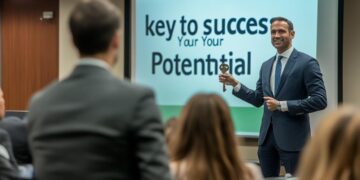In the hyper-competitive, digitally saturated global marketplace, the simple act of acquiring a new customer is often a complex, expensive, and resource-intensive endeavor. Businesses spend significant capital on sophisticated advertising campaigns, intricate sales funnels, and targeted promotional offers just to achieve that initial, crucial conversion. However, true, sustainable profitability and market resilience are not fundamentally dictated by the mere number of new customers added monthly.
They are overwhelmingly determined by the organization’s capacity to retain those customers, deepen their engagement, and significantly increase the total financial worth they represent over the entirety of their relationship with the brand.
Customer Lifetime Value (CLV) is the indispensable, specialized management discipline dedicated entirely to meticulously calculating, strategically influencing, and actively maximizing this total revenue potential. This crucial metric provides the essential, forward-looking roadmap for resource allocation. It shifts the entire focus of the business from costly, one-time transactions to the long-term, compounding value of loyal relationships.
Understanding the core calculation, the key drivers of customer retention, and the strategic imperative of maximizing CLV is absolutely non-negotiable. This knowledge is the key to minimizing acquisition waste, securing superior long-term profits, and achieving sustainable, enduring business longevity.
The Indispensable Metric of Lifetime Value
Customer Lifetime Value (CLV) represents the total net profit a company expects to derive from an entire future relationship with a specific customer. It is a powerful, predictive metric that moves the business model away from the shortsighted focus on immediate transaction profitability. Instead, CLV prioritizes the sustained, compounding revenue generated over years of continuous patronage. This long-term focus guides essential strategic investments.
The mathematical concept is deceptively simple but profoundly strategic. CLV requires forecasting the customer’s purchase frequency, average transaction size, and the total expected duration of the relationship. Calculating this metric allows management to determine precisely how much capital can be profitably spent to acquire and service that specific customer segment. CLV provides a crucial financial benchmark.
A consistently high CLV indicates that the company excels not only at making sales but also at customer retention and loyalty. High retention drastically reduces the need for constant, expensive customer churn replacement. Long-term loyalty translates directly into superior operational stability and predictable future revenue streams. Retention is the ultimate driver of efficiency.
Businesses often prioritize the CLV metric over short-term revenue goals. They recognize that a customer retained over five years is exponentially more valuable than a customer acquired for a single, one-time purchase. This focus transforms customer service from a simple cost center into a strategic, value-creating investment.
Calculating and Analyzing CLV
The rigorous calculation and continuous analysis of Customer Lifetime Value (CLV) is a mandatory discipline that quantifies the total asset value of the customer base. The accuracy of the inputs is crucial for strategic reliability. Understanding the formula guides strategic decision-making.
A. The Basic CLV Formula
The foundational, simplified formula for CLV requires the product of three key inputs. This includes the customer’s average purchase value per transaction. It also includes the customer’s average purchase frequency per year. Finally, it includes the average customer lifespan (duration of the relationship). This product yields the total revenue. The total net profit is found by subtracting the acquisition and service costs.
B. Customer Acquisition Cost (CAC)
Customer Acquisition Cost (CAC) is the total expense incurred to convince a prospect to become a paying customer. CAC is calculated by dividing all marketing and sales expenses by the number of new customers acquired over a period. Comparing CLV to CAC is the most fundamental strategic calculation. A healthy business requires CLV to be significantly higher than CAC (ideally 3:1 or more). A low ratio signals an unsustainable business model.
C. Segmentation by Value
Not all customers are created equal in terms of their CLV. Segmentation by value involves identifying and prioritizing high-value customer groups. Businesses allocate disproportionately higher resources to retaining and servicing these elite, high-CLV segments. This strategic focus maximizes the return on service investment. Understanding which customers drive the most long-term profit is essential.
D. Discounted CLV
For rigorous financial planning, the CLV calculation must be discounted. The revenue expected years in the future is adjusted to reflect its present-day value. This crucial adjustment accounts for the time value of money and the inherent risk of future revenue streams. Discounted CLV provides the most accurate, objective measure of the customer asset’s true economic worth today.
Drivers of Customer Retention
![]()
Maximizing Customer Lifetime Value is entirely reliant upon the organization’s capacity to minimize customer churn and relentlessly drive retention. Retention strategies focus on building deep emotional trust, delivering consistent value, and providing a superior customer experience. Loyalty is the ultimate barrier to competition.
E. Exceptional Customer Experience (CX)
Exceptional Customer Experience (CX) is the non-negotiable foundation of high retention. CX encompasses every touchpoint the customer has with the brand, from the ease of website navigation and the speed of order fulfillment to the quality of post-sale support. A seamless, delightful, and intuitive experience minimizes friction. It actively encourages repeated purchases and strong loyalty.
F. Building Trust and Transparency
Long-term relationships are built on trust and transparency. Companies must be honest about their product quality, pricing, and data usage policies. Rapid, authentic, and proactive communication during product failures or service disruptions significantly mitigates reputational damage. Trust is the lubricant of sustained customer loyalty.
G. Personalized Communication
Moving beyond generic marketing, personalized communication ensures the customer feels uniquely valued and understood. Utilizing data analytics, businesses can tailor product recommendations, service offers, and communications based on the customer’s specific purchase history and individual preferences. This bespoke approach enhances relevance and increases engagement.
H. Loyalty and Reward Programs
Structured Loyalty and Reward Programs actively incentivize repeated purchases and discourage defection to competitors. These programs reward high-value customers with exclusive discounts, early access to new products, or personalized service tiers. A well-designed loyalty program is a crucial tool for increasing both purchase frequency and the average transaction value. Rewards reinforce desired long-term behavior.
Operational and Cultural Alignment
The successful maximization of CLV is not solely the responsibility of the marketing department. It requires a profound, systemic operational and cultural alignment across the entire organization. Every employee, from the CEO to the customer service representative, must understand their direct role in creating and protecting customer value. Culture dictates the quality of service delivery.
I. Employee Engagement and Training
Highly engaged employees who feel valued and respected are significantly more likely to deliver exceptional customer service. Companies must invest diligently in training and empowering frontline staff. Employees must possess the autonomy and motivation to resolve customer issues quickly and empathetically. Employee satisfaction is the necessary prerequisite for customer satisfaction.
J. Product and Service Quality
Superior product and service quality is the non-negotiable foundation of all long-term value. Customers will only return if the core offering consistently meets or exceeds their expectations. Rigorous quality control minimizes defects and warranty claims. This reliability builds the essential credibility required for sustained trust.
K. Leveraging Data Analytics
Data Analytics provides the crucial insights required for continuous CLV improvement. Analytics track behavioral changes, predict potential customer churn before it occurs, and identify the most effective service interventions. A data-driven approach allows for proactive engagement with customers showing signs of dissatisfaction. Data is the roadmap for retention strategy.
L. Customer Feedback Loops
Establishing robust customer feedback loops is essential for continuous improvement. Companies must actively solicit, rigorously track, and immediately act upon customer complaints and suggestions. Transforming negative feedback into verifiable service improvements demonstrates commitment. This transparency strengthens loyalty and trust.
Conclusion


Customer Lifetime Value (CLV) is the essential, predictive metric that measures long-term revenue potential.
The goal of maximizing CLV strategically shifts the business focus from costly one-time transactions to the compounding profit of loyal relationships.
The financial health of the business is confirmed by maintaining a strong CLV-to-CAC ratio, indicating efficient sales and marketing investment.
Customer retention is achieved through the non-negotiable standard of delivering consistently exceptional, low-friction customer experience (CX).
Personalized communication, driven by meticulous data analytics, enhances customer relevance and encourages continuous, profitable engagement.
Loyalty and reward programs are crucial tools that actively incentivize repeated purchases and effectively discourage customer defection to competitors.
The successful execution of a high-CLV strategy mandates a systemic, cultural commitment across every organizational department.
Employee engagement and empowerment are the foundational internal drivers that ensure superior, empathetic service delivery at every customer touchpoint.
The commitment to superior product quality and service reliability is the fundamental, non-negotiable basis for building long-term trust and loyalty.
Maximizing CLV is the ultimate financial discipline that secures predictable revenue streams and sustained operational stability for the enterprise.
This strategy is the final, authoritative guarantor of a brand’s competitive resilience and its long-term viability in the global marketplace.
Understanding and implementing CLV principles is the single most powerful action for driving sustainable corporate profitability.










